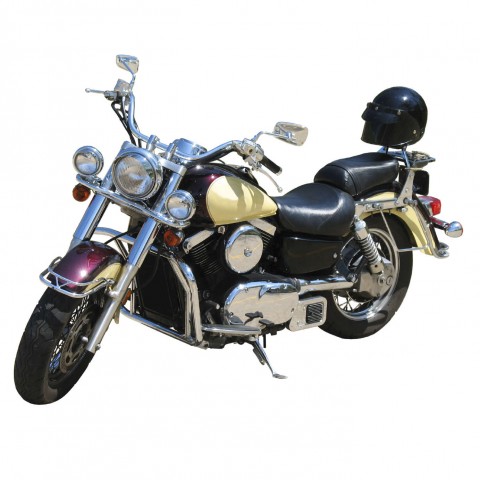
You might have heard that Indonesian is an easy, accessible language, but have you ever wondered why?
Since you’re considering learning Indonesian, you probably want to know what’s involved with the process. Are you going to have to memorize long declension tables, write out conjugations a zillion times, or cram adjective endings into your memory?
None of the above.
Indonesian grammar doesn’t require you to think in the ways that European grammar does. Instead, it’s a different challenge that people find refreshing and stimulating.
In this article, we’ll break down some of the major Indonesian grammar rules that make it particularly interesting to learn (and not particularly challenging!). You’ll soon see that understanding Indonesian grammar just takes a bit of time and dedication.
 Table of Contents
Table of Contents
- General Rules
- Pronouns
- Levels of Formality
- Measure Words
- Active and Passive Affixes
- The Relative Pronoun Yang
- Particles
- Conclusion
1. General Rules

Although Indonesian vocabulary is hard to remember sometimes, Indonesian grammar is generally easy to pick up.
In fact, you can often translate Indonesian sentences into English word-for-word.
That’s because Indonesian word order is nearly identical to English word order, at least in most cases. There’s also nothing like conjugation or declension to worry about—even plural forms of nouns go unmarked more often than not.
Indonesian verbs? You don’t have to worry for a moment about complex conjugations. Instead, there are creative, interesting prefixes and suffixes that let you explore new ways of thinking about sentences.
And even complex Indonesian sentences start to make sense after just a bit of dissection. As long as you know the vocabulary, you’re going to be able to read Indonesian newspaper articles and participate in text message conversations with equal ease.
So don’t be intimidated by the fact that Indonesian comes from the other side of the globe. Let’s jump in and see what Indonesian language grammar has to offer.
2. Pronouns
When you look at a language from a totally different branch than English, you can’t take anything for granted at first. For example, Indonesian has more pronouns than you probably expected!
First, Indonesian makes a distinction between inclusive and exclusive first person plural. In other words, there’s one word, kita (“we: you and me”) and kami (“we: me and somebody else, but not you”). Grammatically, they function identically, but if you’re not used to making this distinction, there’s a bit of a mental leap to overcome as you suddenly have to be more specific in your thoughts when speaking.
Next, there are different pronouns based on politeness. Plenty of languages have a “formal you,” but Indonesian has casual, formal, and respectful pronouns for several different grammatical persons.
Let’s look at the “I-You” pair. In super-casual Jakarta slang, that’s gue/lu. Casually with friends (outside Jakarta), you’d likely say aku/kamu. In formal speech and with strangers, you’d use saya/Anda (note that Anda is always capitalized).
Many Indonesians don’t even use these pronouns, though—they’ll use your name or your title, or Bu/Pak (“Ma’am”/”Sir”), in place of the pronoun.
These formality levels don’t stop at pronouns!
3. Levels of Formality

Many languages spoken in Asia have quite complex levels of language, ranging from “street slang” to special dialects spoken only by royalty. Since the Indonesian language isn’t that old, there’s nothing like a “royalty dialect,” but that does exist in local languages such as Javanese and Balinese.
Indonesian people tend to be multilingual, and “proper” Indonesian is seen as more formal than their local language. Therefore, informal slang terms often have a flavor of the local language.
Take the word ingin (“want”) in Standard Indonesian. In Java, you’ll hear people say kepengin or pengin—a related Javanese word—from time to time. This is considered much less formal.
Unfortunately for you, there’s not really a great way to tell a word’s formality level from its sound or spelling. Another word for “want” is hendak, an older word from Malay that’s considered relatively formal.
Learning the differences between closely related synonyms is one of the most time-consuming tasks in learning Indonesian, but after enough study, you’ll start to get a feel for the differences. It’s also recommended that you expose yourself to more of the language through literature, newspapers, and TV.
4. Measure Words

Grammar in Indonesian, like that of every language around the world, has the concept of “countable” and “uncountable” nouns. In English, you can have “one book” but you can’t have “one rice.” The first is countable, and the second is uncountable. English requires that you use measure words, or counters, for uncountable nouns: “one grain of rice.”
Indonesian requires counters for all nouns instead. It’s much like Mandarin in this regard, though perhaps a bit less strict.
The default measure word for inanimate objects is buah, meaning “fruit.”
- Di kamar ada tiga buah meja. / “There are three tables in the room.”
This can be used for pretty much all objects, though to speak perfectly correct Indonesian you’ll need to memorize the correct counters for different shapes of objects, like potong for pieces of things.
- Aku punya dua potong roti. / “I have two pieces of bread.”
Other than that, you’ll need orang for people and ekor for animals.
- Aku mau setengah ekor ayam. / “I want half a chicken.”
- Dia seorang guru yang baik. / “She’s a good teacher.”
Confusing these measure words or using sebuah sounds strange or even insulting in some cases, so make these measure words your top priority.
5. Active and Passive Affixes

Adding affixes to verbs is a complicated part of Indonesian grammar, but we’ll just focus on two prefixes for now: the active prefix and the passive prefix.
In a nutshell, Indonesian verbs take prefixes and suffixes to show not who did the action, but in what way the action was performed. Therefore, there is a prefix to show a verb with an object, and that prefix takes the form of me- or men-.
- Dia sedang menonton televisi. / “She’s watching TV.”
- Kapan kamu akan menulis bukumu? / “When are you going to write your book?”
In the same way, adding di- to a root verb instead of me– flips things around and marks the passive voice.
- Televisi sedang ditonton olehnya. / “The television is being watched by her.”
- Buku saya akan ditulis tahun depan. / “My book will be written next year.”
These examples seem a bit off in English, and indeed, they’re not particularly common phrases in Indonesian. However, when you compare the active sentences to the passive sentences, it’s clear to see how the prefix changes the meaning of the verb.
That’s just scratching the surface of what’s possible with Indonesian verbs. To find out more, check out our Indonesian Verbs page!
6. The Relative Pronoun Yang
Whenever you learn a new language, there’s always something that marks a transition from being a “total beginner” to being a little bit more capable. In many languages, that’s the ability to make relative clauses, bringing your sentences to a new level of expression.
Fortunately, with Indonesian you can start to form relative clauses extremely quickly. All it takes is one connecting word: yang.
- Ini buku yang dibeli Amron. / “This is the book that was bought by Amron.”
You can use this for animate and inanimate objects—no need to choose between “that” and “who,” as you would in English.
- Dia guru yang mengajar bahasa Inggris di sekolah waktu saya kecil. / “She’s the teacher who taught English at school when I was a kid.”
7. Particles

Instead of tenses, Indonesian takes after other Asian languages and uses particles to convey time aspects. Sudah marks completed actions, sedang marks in-progress actions, and akan marks future actions.
- Apakah kamu sudah membersihkan kamarnya? / “Have you already cleaned the room?”
In many cases, though, these particles are used once or twice at the beginning of the topic and then dropped, and the context is enough to maintain the temporal consistency.
Lastly, several particles are extremely common in informal Indonesian, and they’re notoriously hard to translate.
- Kok motor parkir di sana? / “Why is the motorbike parked (there) on the sidewalk?”
- Jangan begitu dong! / “Don’t be like that, man!”
In these examples, you can see the particles kok, expressing surprise, and dong, expressing that what you’re saying is rather obvious. Kok can be considered the casual version of kenapa (“why”).
These particles only rarely appear in writing, and even then, only in casual online writing such as magazine articles or comment sections. Reading through comment sections under YouTube videos might be a bit mind-numbing, but it’s a great way to get a feel for super-informal Indonesian that you won’t find in textbooks.
8. Conclusion
As you can see, Indonesian really isn’t that far off from English in a lot of places. When you look at a list of Indonesian sentences with their English translations, you can really start connecting the dots all on your own.
But how much time do you want to spend connecting the dots, and how much time do you want to spend speaking Indonesian?
With IndonesianPod101, you can choose the perfect blend of resources for your learning style. You can follow along with entertaining podcasts from beginner to advanced level, and also take it slower and read through grammar and pronunciation guides aimed at learners of every level.
In no time, you’ll feel yourself picking up Indonesian words and phrases left and right, naturally assimilating the grammar in a totally effortless way. Soon you won’t have to even think about word order or verb prefixes—they’ll just come to you.
Sign up now for IndonesianPod101 and experience this effect for yourself!
Before you go: Which of these Indonesian grammar rules are new to you, and which ones seem the most difficult so far?










